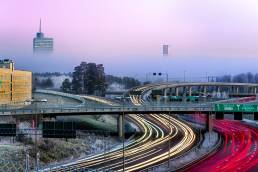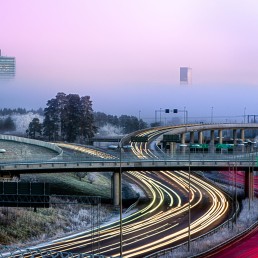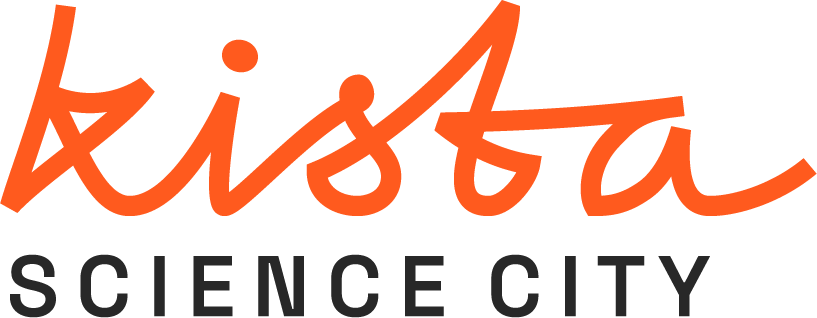Project Template
5G Ride
Autonomous vehicles
The project
5G Ride is a concept for self-driving, 5G-connected electric vehicles used in public transport. In the autumn of 2020, the vehicles were tested in traffic at Royal Djurgården. In 2021 the project continues, focusing on the development of the Connected Control Tower. Urban ICT Arena manages the project in close partnership with Ericsson, Keolis, Telia, Intel and T-Engineering.
The purpose of the project is to demonstrate safe monitoring with 5G, transfer the driver to an outside position of the vehicle and releasing resources for improved public transports. The 5G network’s unique technical features, including enhanced security, extremely high data speeds combined with low latency, means that the connected buses can respond in real time to commands from the centralized control tower.
In 2021, additional funding has been added to the project and the focus for the continuation of the project is the further development of the Connected Control Tower. One part of this is how to use more data, for example about the route, the vehicle or the connection strength, to make it possible to prevent any problems, plan routes and schedules better and act more swiftly should problems arise. New collaborations will be added with KTH the Royal Institute of Technology, the City of Stockholm and the Stockholm Region.
Project period
2020-2022
Partners
Urban ICT Arena
Keolis
Ericsson
Telia
Intel
Scania
Viscando
T-Engineering
Contact
David Eskilsson, Edeva
david.eskilsson@edeva.se
Summary
5G Ride is a concept for self-driving, 5G-connected electric vehicles used in public transport. In the autumn of 2020, the vehicles were tested in traffic at Royal Djurgården. In 2021 the project continues, focusing on the development of the Connected Control Tower. Urban ICT Arena manages the project in close partnership with Ericsson, Keolis, Telia, Intel and T-Engineering. The purpose of the project is to demonstrate safe monitoring with 5G, transfer the driver to an outside position of the vehicle and releasing resources for improved public transports.


The pilot
The pilot in 2020 was the result of a unique collaboration between some of Sweden’s most prominent and well-known organizations within the fields of mobility and technology. The knowledge hub and testbed Urban ICT Arena managed the initiative, with Keolis as bus operator. Ericsson provided the technical solution for the connected control tower, a solution that will be further developed during 2021. Telia provideded the 5G-connectivity in collaboration with Ericsson and deployed 5G at Djurgården specifically for this project. Intel delivered analytics capabilities and the technology for the processing across the network including the IT-system in the vehicles and the control tower, as well as the mobile network. T-Engineering, a Swedish technology firm, delivered vehicle and self-driving technology.
HRH Prince Daniel was among the dignitaries to attend the official inauguration ceremony outside Tekniska museet.
The project is funded by Drive Sweden, Vinnova and FFI.
Article Template

Smart City
AI and multisensors to improve urban mobility
There are today several technologies through which city traffic and pedestrian flows can be operated and manage. At the same time, and as a result of our increasing mobility behavior, cities face severe challenges with congestion, accidents and air pollution.
Last edited
2023-01-28
Duration of reading
4m
The utilization of sensing technology in our streets
The utilization of sensing technology in our streets comes with many possibilities, as sensing and imaging technologies are becoming advanced and collect data using various types of scanning cameras and sensors equipped with AI. This allows accurate information on for example traffic motion per minute, speed, and which types of vehicles are passing at certain time periods.
This is why we have decided to gather innovative ICT companies in Kista to test and evaluate their technologies in real urban environments, a project run by Sara Nozkova, Mobility Lead, Kista Science City.
-We need to make transport smarter, more robust and more sustainable. And we also need to think about the public space, so that we make it more accessible, attractive and available for all the people. These tests are very important because we need a place where we can test new technology.” says Maria Holm, Project Manager at the City of Stockholm.
Viscando, Qamcom and Savantic are all involved in ongoing tests to promote better traffic flows based on real time data, using multisensor and AI technologies installed on the streets of Kista.
– Traditional ways of measuring traffic flows are usually based on induction lines under the road surface or on tubes laid on the streets. Our goal with the test in Kista is to evaluate whether existing technologies such as multisensors and AI-based based technologies, can provide better results and added value for the city planners, says Anna Chiara Brunetti, Project Manager at Qamcom.
– If we would be able to plan the public transportation system in a data-driven way, that would lead to much more attractive public transportation and a more sustainable city, says Claes Orsholm, Founder & CEO at Savantic.
Call for action
Are you too a Stockholm-based SME developing solutions with the potential to transform the automotive industry and transportation system? Would you like to demonstrate your solution to a wider audience, or test together with a potential business partner within the ICT or automotive sector? Please contact sara.nozkova@kista.com.
Intelligent traffic systems
Multisensors is part of the focus area “Intelligent traffic systems“, creating prerequisites for unique insights into current traffic flows. A process and phsysical place where businesses quick and effective can test and develop their tech and to compare solutions with other technology leaders.

